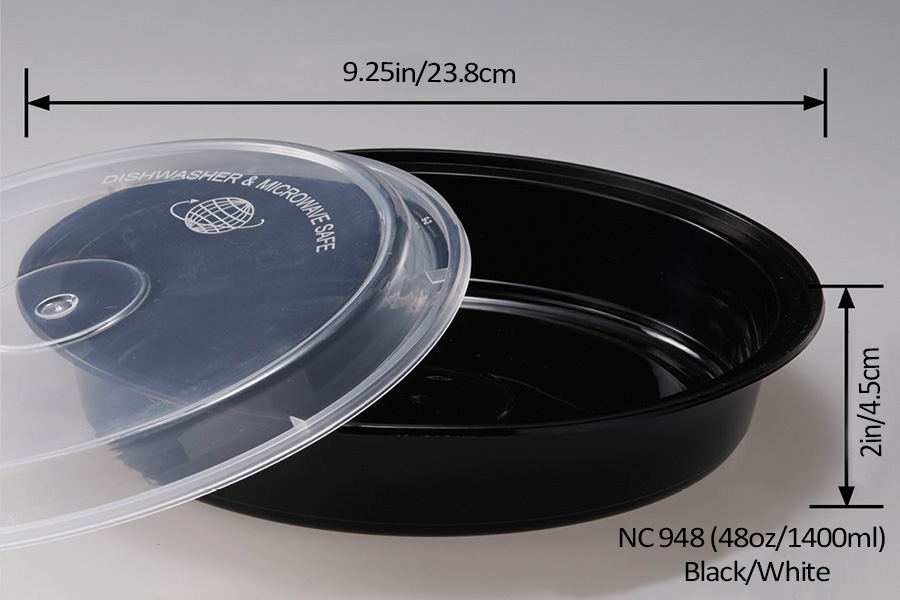Are Plastic Food Storage Containers Safe?
With convenience comes concern—many people ask whether plastic food storage containers are safe for everyday use. As the manufacturer of disposable plastic food containers (clear lids, deli styles, multiple sizes: 350ml to ~1400ml) , we want to give you a clear, factual guide on safety, what features matter, and how to use them wisely.
What Determines Safety in Plastic Containers
Here are the key factors that affect whether a plastic container is truly safe for food storage:
| Factor | Why It Matters |
|---|---|
| Type of plastic / resin code | Different plastics react differently to heat, acids, and oils. Some leach harmful chemicals if mis-used. |
| FDA / food-grade certification | Ensures the resin and additives passed tests for safety, migration, and toxicity. |
| Thickness & clarity | Thicker walls resist warping; clarity helps you see stains and cracks. Disposables are thinner; ideal for short-term use. |
| Design of lid and seal | A tight‐fitting lid reduces spills and exposure to air, preventing bacterial growth. |
| Temperature rating (microwave / freezer / dishwasher) | Plastic expands/contract; if not rated, containers may release substances, warp, or crack. |
Pros & Cons of Using Disposable Plastic Food Containers
Pros:
Lightweight, inexpensive, and easy to transport.
Clear lids help you identify contents at a glance.
Suitable for single‐use or short‐term storage like takeaways or deli items.
Jinshunda’s wide range of sizes (e.g. 12-oz / 350ml, 30-oz / 900ml, 48-oz / 1400ml) means plenty of choice for different portion sizes.
Cons:
Less durable: more prone to cracking upon impact.
Likely not safe for high heat (e.g. boiling water or oven use).
May stain or retain odors if used repeatedly.
Environmental concern: single-use plastics increase waste unless recycled properly.
How to Use Disposable Plastic Containers Safely
To minimize risks and maximise usefulness, follow these practices:
Avoid high heat. Don’t microwave unless clearly stated as microwave-safe; avoid boiling water or putting containers in ovens.
Cool before covering hot food. High temperatures can warp lids or cause warping which might affect sealing.
Don’t freeze foods with high water content unless designed for it. Expansion may crack the plastics.
Use once, or recheck condition if reused. Cracks or cloudiness can signal degradation.
Clean with gentle detergent. Harsh abrasives can damage container integrity.
Recycle wherever possible. Check for recycling code and local rules.
“Safe” Features to Look for in Plastic Containers
When buying plastic (especially disposable) food containers, these features increase safety:
Marked food safe / food grade on packaging.
Clear labeling of temperature limits (freezer, microwave, hot water).
Secure lids that snap or lock firmly.
Transparent lids for checking for cracks or stains.
Smooth interior surfaces; minimal crevices for bacteria to hide.
Our Disposable Containers & Safety
At Jinshunda, our product line includes many clear plastic disposable containers with fitted lids—various shapes (round, square-bottom), volumes (≈12 oz to 48 oz) with clear lids.
Built for short-term storage, takeout, meal prep.
Lid designs reduce spillage, and clarity helps spot damage.
Intended for cold or room-temperature use; not designed for oven or high heat exposure.
Summary
Yes, disposable plastic food containers can be safe when used properly. They are excellent for convenience and short-term food storage—just be mindful of heat, reuse, and quality. And choose trusted food-grade products that clearly state safety features. If you want to custom disposable plastic food containers, please contact us.
Previous: How Wide Is A Clothes Hanger?


